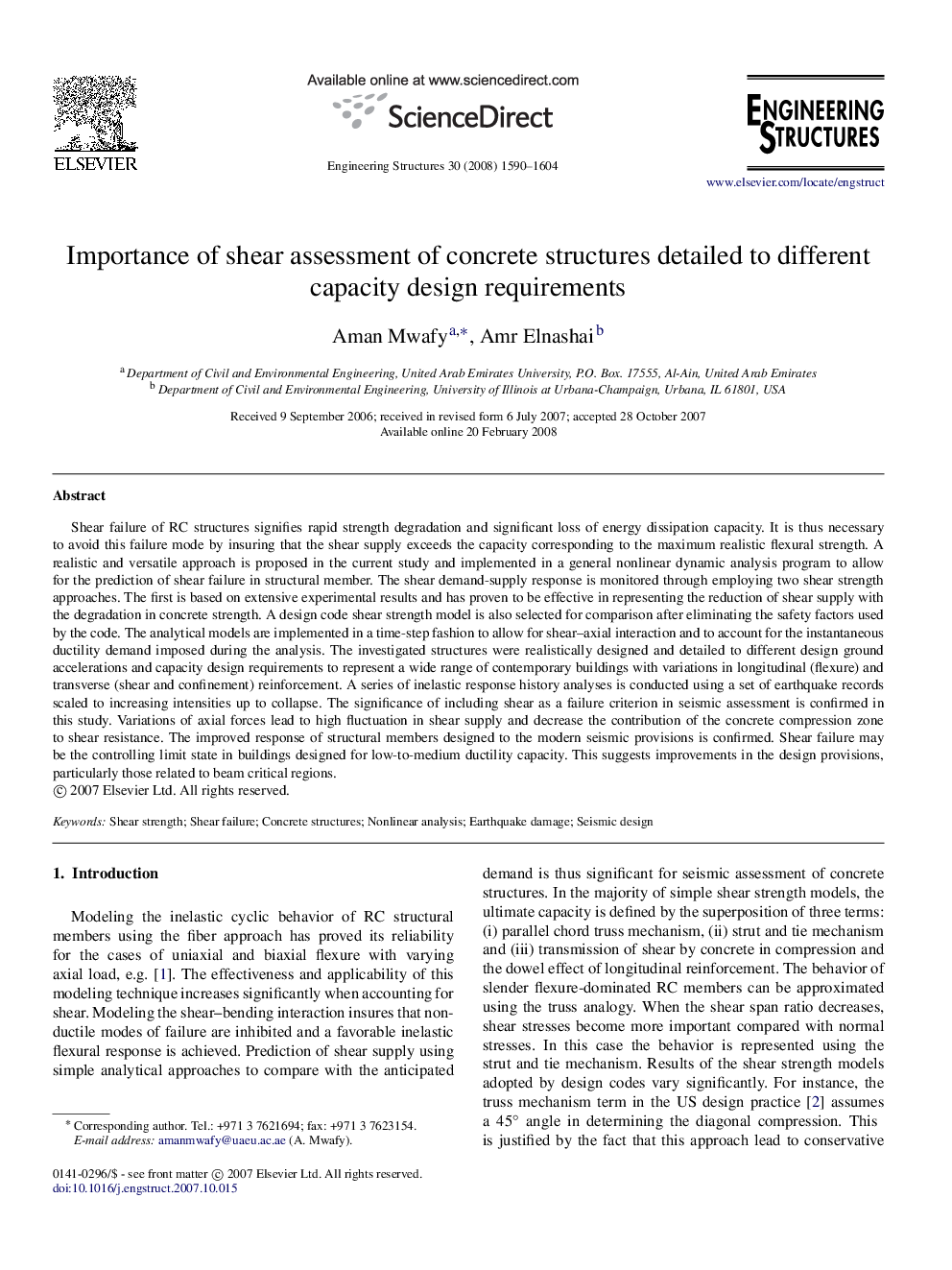| کد مقاله | کد نشریه | سال انتشار | مقاله انگلیسی | نسخه تمام متن |
|---|---|---|---|---|
| 268751 | 504446 | 2008 | 15 صفحه PDF | دانلود رایگان |

Shear failure of RC structures signifies rapid strength degradation and significant loss of energy dissipation capacity. It is thus necessary to avoid this failure mode by insuring that the shear supply exceeds the capacity corresponding to the maximum realistic flexural strength. A realistic and versatile approach is proposed in the current study and implemented in a general nonlinear dynamic analysis program to allow for the prediction of shear failure in structural member. The shear demand-supply response is monitored through employing two shear strength approaches. The first is based on extensive experimental results and has proven to be effective in representing the reduction of shear supply with the degradation in concrete strength. A design code shear strength model is also selected for comparison after eliminating the safety factors used by the code. The analytical models are implemented in a time-step fashion to allow for shear–axial interaction and to account for the instantaneous ductility demand imposed during the analysis. The investigated structures were realistically designed and detailed to different design ground accelerations and capacity design requirements to represent a wide range of contemporary buildings with variations in longitudinal (flexure) and transverse (shear and confinement) reinforcement. A series of inelastic response history analyses is conducted using a set of earthquake records scaled to increasing intensities up to collapse. The significance of including shear as a failure criterion in seismic assessment is confirmed in this study. Variations of axial forces lead to high fluctuation in shear supply and decrease the contribution of the concrete compression zone to shear resistance. The improved response of structural members designed to the modern seismic provisions is confirmed. Shear failure may be the controlling limit state in buildings designed for low-to-medium ductility capacity. This suggests improvements in the design provisions, particularly those related to beam critical regions.
Journal: Engineering Structures - Volume 30, Issue 6, June 2008, Pages 1590–1604